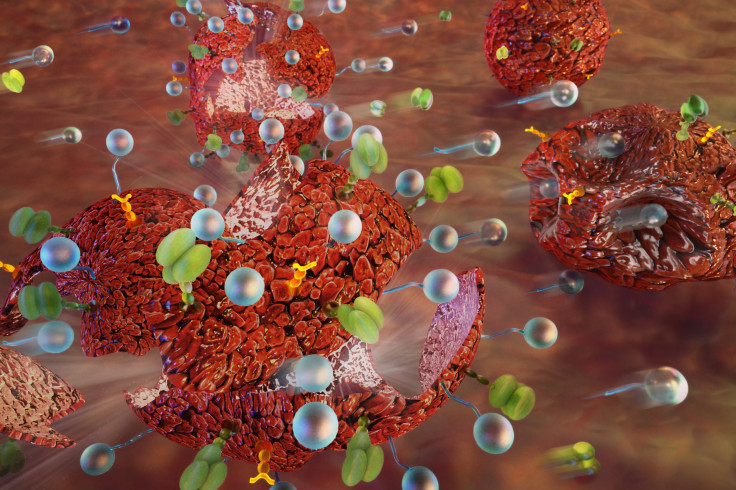Cure For Cancer: Coating Cells With Nanoparticles May Boost Drug Efficiency

Cancer, by its very nature, is a hard disease to cure. Once a patient develops an aggressive tumor — which is basically a clump of cells undergoing division at an uncontrolled and excessive pace — and if the tumor cells metastasize, there is very little that can be done. While chemotherapy provides a fighting chance, more often than not, cancer comes back and kills the patient.
In recent years, scientists have turned to a rapidly burgeoning field to look for a better cure — nanotechnology, which, as the name suggests, deals with entities (particles, layers, or other structures) that are a billionth of a meter in size.
A team of researchers from the Massachusetts Institute of Technology (MIT) has now used nanotechnology to devise a technique to make tumor cells more susceptible to certain kinds of anti-cancer drugs. In a study published Monday in the journal Nature Communications, the researchers describe how coating cells with nanoparticles before delivering drugs can boost the efficacy of a drug that triggers suicide in cancer cells.
“When you attach many particles to the membranes of these cells, and then expose them to forces that mimic those in the human body, like blood flow, these therapeutics become more effective. It’s a way of amplifying the forces on the cells using polymeric materials,” study lead author Michael Mitchell from MIT’s Koch Institute for Integrative Cancer Research said in a statement released Monday.
For the purpose of their study, the researchers focused on an experimental drug called Tumour necrosis factor-Related Apoptosis-Inducing Ligand (TRAIL), which binds to receptors on cell membranes and sends a signal that stimulates apoptosis, or programmed cell death. In tests on mice, the scientists found that tethering nanoparticles (in this case particles that ranged in size from 100 nanometer to 1 micrometer and were made of biodegradable polymers known as PLGA) to the surface of cells made the drug 50 percent more effective.
According to the researchers, this may be because the attached nanoparticles compress the shroud of molecules that usually surrounds tumor cells, thereby making it easier for the drug to interact with receptors on the cell surface that turn on the apoptosis signals.
“When you expose cells to forces and then these particles are coming down on the cell, they could be flattening all these molecules on the surface. Then the receptor can come in better contact with TRAIL to induce tumor cell death,” Mitchell said.
© Copyright IBTimes 2024. All rights reserved.












